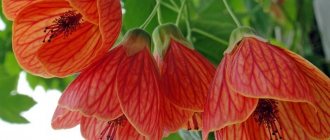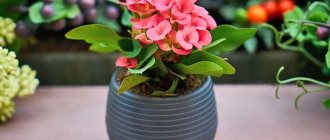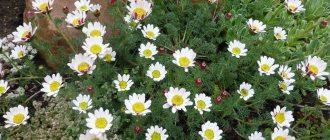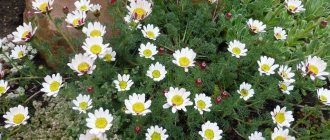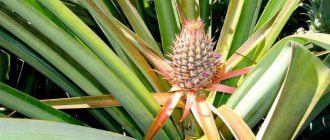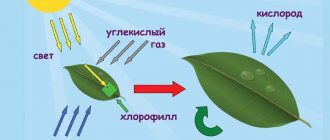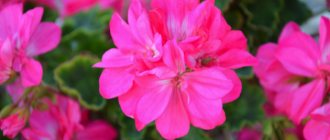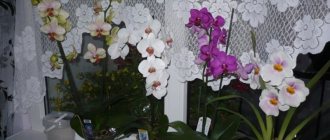Violet, cut
Incised violet (Viola incisa) is a type of wild violet, family. violet _ This is a small herbaceous plant without a stem. The short rhizome turns into a whitish-colored root.
The leaf blades are ovate, toothed, or pinnately divided, slightly pubescent. Mounted on short petioles.
Photo of a violet cut in its natural environment.
The endemic flower is bluish-violet in color, with a purple corolla, 1.8-2.3 cm in diameter, with a 7-7.5 mm spur and sepals. The flower has a rather strong “violet” aroma. The plant produces flower stalks much longer than the leaves. The seed capsule is oval in shape, up to 1 cm in length.
Natural hybrids of violet V.incisa with V.dissecta are known.
Important! The cut violet is recognized as an endangered species and is listed in the Red Book. Being a very vulnerable plant, violet suffers from human activity. Biological scientists are taking steps to save this unique flower.
Lily saranka
The habitat of this cold-resistant species is Southern Europe and Siberia. Under natural conditions, the saranka lily grows in deciduous forests and on the edges. The height of its stem is 80 cm. The flowers are purple in color and have dark spots. Lily blooms in mid-summer. Blooming flowers exude a sweet aroma. Limiting factors include deforestation, grazing, harvesting for bouquets and digging up bulbs for transfer to a personal plot.
Basic rules of care
The cut violet is perfect for indoor floriculture. At home, this plant blooms and reproduces well.
Lighting and temperature
Violet loves light, but does not tolerate direct sunlight. An eastern window would be an ideal place to grow a flower; in the west, the bright midday sun can cause burns to the tender parts of the plant.
The plant grows well at normal room temperature. Conditions below +15˚С and above +25˚С are undesirable when breeding it. The flower does not tolerate sudden day and night temperature changes.
What kind of soil does he prefer?
In nature, the flower grows in places with poor but well-ventilated soil. This determines the choice of soil. The soil for violets should be light, porous, well breathable and absorb moisture.
When preparing soil for a flower, the following components are used:
- nutrient soil (leaf soil with the addition of humus) - 30%;
- peat (high peat) - 20%;
- coarse sand – 30%;
- soil loosening agent (perlite or vermiculite - 10%);
- charcoal or chopped sphagnum moss - 10%.
Notched violet needs light, well-draining soil.
As can be seen from the list, the deficiency of one component of the mixture can be compensated for by similar others . Before use, the soil is disinfected by heating it in an oven at 100˚C or spilled with a solution of phytosporin.
An important factor is the acidity of the soil. The flower can only grow on slightly acidic soils. The acidity of the soil is checked with litmus paper. With increased acidity, the substrate is supplemented with dolomite flour.
Choosing a pot
The root system of a flower does not grow deep, but grows along the surface of the soil. In addition, it is better to plant several copies of the plant in one pot. This improves the overall appearance of the composition. The pot should be shallow , but with a sufficiently large diameter.
Effect of air humidity
The cut violet loves high air humidity , but does not tolerate moisture on the leaves and stems. Therefore, under no circumstances should it be sprayed. If the room is too dry, the solution would be to install a container of water next to the pot.
Watering and fertilizing
The plant prefers the soil to always be slightly moist . Water carefully, avoiding moisture getting on the leaves.
You can combine top and bottom (into the tray of the pot) watering.
The flower should be fed monthly in the spring and summer. Fertilizers usually use complex mineral fertilizers in low concentrations.
In the wild, cut violet is extremely unpretentious. It easily tolerates drought, cold and other unfavorable conditions.
This is interesting! In indoor culture, the plant is very capricious and requires attention.
Pruning and hygiene
The flower does not require pruning. Old, unattractive leaves should be removed. Under no circumstances should you wash the plant. If the leaves are very dusty, carefully clean them with a brush.
Transplantation, rejuvenation
The cut violet is not prone to stretching the stem , like its close relative, the Uzambar violet. Therefore, flower rejuvenation is not often necessary, because the life cycle of a violet is about 10 years.
Flowers are transplanted to replace depleted or acidified soil:
- Expanded clay is placed in a thick layer on the bottom of the pot, because the root system of the flower does not penetrate more than 5 cm into the pot;
- Prepared soil is placed on the drainage;
- On top there is again a layer of expanded clay, after making a hole in it, the plant is planted.
Transplantation must be done as carefully as possible; the roots of the seedling are thin and fragile.
Transplanting cut violets should be done very carefully.
Short description
The tulip growing in the steppes and meadows received its name in honor of the German (however he had Russian roots) scientist-breeder Alexander Ivanovich Schrenk, who was a researcher in the northeastern part of European Russia. He discovered his find in 1873 in the vastness of Kazakhstan. The plant he saw seemed fragile and delicate. It had a beautiful bud of a bright color.
On the territory of Russia, the Schrenck tulip is found in European regions: in the southeast of the Voronezh region, as well as in the Saratov, Astrakhan, Volgograd, Samara and Orenburg regions. Some specimens have even taken root in Western Siberia, the Urals, and Kalmykia. In addition, the culture grows in the southeast of Ukraine, in southern Crimea, as well as in Kazakhstan, Iran and the People's Republic of China.
From a botanical point of view, the Gesner tulip is a herbaceous bulbous perennial (ephemeroid), medium-flowering. Represents the Liliaceae family of the Tulip genus. Externally the flower is small. The height of the peduncle reaches 40 cm, the leaves are about 20. The peduncle is erect, has a smooth surface, its shade is rich green. Closer to the bud, part of the stem is dark red, sometimes with a slight blue tint.
The foliage is greenish with a slight bluish tint. One flower usually has 3–4 oblong leaves. One rises from the ground, the rest envelop the peduncle at the very base of the bud. The leaves are wavy at the edges and directed in different directions. The bud is cup-shaped, its height is about 7 cm. Petals (length from 2.5 to 5.5 cm) with rounded, sometimes slightly pointed edges. Their total number is no more than 6.
The Gesner tulip shows different colors during the flowering period: it can be white, yellow, orange, lilac-pink, slightly burgundy, and sometimes it even turns purple. More often there are specimens with a mixed shade - they are called variegated - for example, the petals are painted one color, the center and edges - another.
The stamens are half as long as the perianth. The bulbs of wild tulips are small: about 3 cm. The shell is thin-skinned, dark. It is shaped like an egg. The outer side of the bulb is covered with gray-brown scales. During growth, it goes deep into the soil and forms one baby over the course of its entire life.
This is interesting: Dung mushrooms - photos and descriptions of all types
Features of flowering, growth and reproduction
What do flower stalks look like?
Before flowering, the plant produces flower stalks that are significantly higher than the height of the leaves. The peduncles are densely pubescent, slightly curled at the top and have one flower each.
Violet flowers are bluish-violet, very fragrant. The flower stays on the plant for about a week , but in the heat it fades earlier.
Violet blooms extremely irregularly . For flowering in the autumn-winter period additional lighting is required.
Advice! If the plant stubbornly refuses to bloom, it must be fed several times with potassium monophosphate: a quarter of a teaspoon per 1 liter of water.
Reproduction methods and features
The cut violet does not reproduce either by dividing the bush or by children.
The only way to propagate a flower is by seeds .
When several plants are placed in one pot, cross-pollination occurs and seeds set easily.
The fruit of the flower is a seed capsule 1 cm in size. The seeds have good germination.
How long does it take to grow an adult plant?
To grow young plants from seeds, you need to sow them in a light substrate without deepening .
The planting tray must have drainage holes and a layer of expanded clay at the bottom. Crops should be covered with glass or polyethylene
When the seedlings have real leaves, they should be planted in separate small pots with drainage.
Already 40-60 days after germination, young seedlings produce their first flowers. The plant becomes fully mature within a year.
Habitats
The most widespread places of germination are considered to be:
- Siberia;
- Primorsky Krai;
- Altai Republic;
- Khakassia;
- Buryatia.
This flower does not grow outside of Russia.
Like other perennial flowering plants, it can bloom and bear fruit several times throughout its life. It tolerates drought, as well as overheating and dehydration without any problems. In addition, it develops well in the following areas:
- petrophilic steppes;
- areas close to molehills;
- abandoned paths on meadow steppes;
- weakly turfed river pebbles.
The number is currently not accurately estimated, but it is believed that the population decline is influenced by:
- high pasture load;
- urban sprawl;
- road construction;
- industrial development.
Use in landscape design
Violet fits exceptionally harmoniously into the design when creating alpine slides and rockeries. Being in the fresh air, the flower shows unpretentiousness in cultivation : drought and cold resistance.
Cut violets are successfully used in landscape design.
The possibility of propagation by self-seeding and high decorative value make the plant attractive for widespread cultivation.
List and photos of other plants from the Red Book of Russia
Gymnosperms
Coastal juniper (Juniperus conferta)
Photo: Xemenendura / Wikimedia Commons
Tall juniper (Juniperus excelsa)
Photo: Lazaregagnidze / Wikimedia Commons
Stinking juniper (Juniperus foetidissima)
Photo: Vince Smith/Wikimedia Commons
Juniper (Juniperus rigida)
Photo: Petr Filippov / Wikimedia Commons
Sargent's juniper (Juniperus sargentii)
Photo: Daderot / Wikimedia Commons
Cross-paired microbiota (Microbiota decussata)
Photo: Nick / Wikimedia Commons
Olgin larch (Larix olgensis)
Photo: Plant Image Library from Boston, USA / Wikimedia Commons
Glen Spruce (Picea glehnii)
Photo: Inti-sol / Wikimedia Commons
Pitsunda pine (Pinus pityusa)
Photo: Wikimedia Commons
Bush pine (Pinus densiflora)
Photo: Dalgial/Wikimedia Commons
Pallas pine (Pinus pallasiana)
Photo: ancientsword at Flickr / Wikimedia Commons
Chalk pine (Pinus sylvestris L. var. cretacea Kalen. ex Kom.)
Photo: Admisher/Wikimedia Commons
Angiosperms
Altai onion (Allium altaicum)
Photo: Wikimedia Commons
Japanese maple (Acer japonicum)
Photo: Jean-Pol GRANDMONT / Wikimedia Commons
Wahlenberg's chastuha (Alisma wahlenbergii)
Image: cicon.ru
Snowdrop (Galanthus plicatus)
Photo: Wikimedia Commons
Pistachio (Pistacia atlantica subsp. mutica)
Photo: Wikimedia Commons
Critmum
Photo: Xemenendura / Wikimedia Commons
Sugeroki holly (Ilex sugerokii)
Photo: Qwert1234 / Wikimedia Commons
Aralia cordata
Photo: Dalgial/Wikimedia Commons
Manchurian Kirkazon (Aristolochia manshuriensis)
Photo: Salicyna / Wikimedia Commons
Mountain arnica (Arnica montana)
Photo: Wikimedia Commons
Birch tree (Betula maximowicziana)
Photo: Wikimedia Commons
Onosma polyphylla
Photo: Magnus Manske/Wikimedia Commons
Cardamine purpurea
Photo: Wikimedia Commons
Brasenia
Photo: Wikimedia Commons
Otran's bell (Campanula autraniana)
Photo: Ghislain118 / Wikimedia Commons
Etruscan honeysuckle (Lonicera etrusca)
Photo: Franz Xaver/Wikimedia Commons
Rocking the Ural (Gypsophila uralensis)
Photo: Alexandronikos/Wikimedia Commons
Reviews
Elena. “Three years ago I was given a flower for my birthday. I simply called it a violet; it bloomed with very fragrant flowers. Thanks for the detailed article, now I know that I have a cut violet growing. The description matches exactly. I’ll try to reproduce.”
Andrey. “I purchased three cut violet bushes from the Botanical Garden. Since then I have been successfully growing and propagating for alpine hills at the dacha. I would like to give advice: when propagating, add more sand to the substrate and shade the container with the crops before germination.”
Snowdrop latifolia
The plant is endemic to the central part of the Caucasus and is found in alpine and subalpine meadows. The broadleaf snowdrop spends most of the year in the form of bulbs underground. This is a frost-resistant species that prefers shaded areas. The snowdrop wakes up in the fall, and in the spring it grows green mass. The flowering period occurs in March - April. Flowers exude a delicate aroma. The exact number has not yet been established. In some areas the species is facing complete extinction. Tourists and plant pickers uncontrollably pick flowers and dig up bulbs. Due to cut foliage, the quality of flowering next year deteriorates.
Sword grass
A relict plant growing in the European part of Russia and the Caucasus. It gets its name from its sharp leaves that resemble a sword and have cutting properties. The grass grows along the swampy and muddy banks of the country's rivers and lakes. The plant grows up to one and a half meters in height. The inflorescence resembles spikelets, and the seeds are dispersed by water. There is no exact data on the population size. Swordgrass is in danger of becoming extinct. Negative factors include economic development of reservoirs, peat extraction and fires. Reservoirs along the banks of which swordgrass grows must be given the status of protected areas.
Panax ginseng
A narrow-area plant that is found in the Primorsky and Khabarovsk territories. Common ginseng grows in cedar-deciduous forests and on rocky slopes. As a rule, single individuals are found; the plant does not form clusters. The shape of the root of this perennial resembles a human figure. It has a powerful root, a thin stem, and the inflorescence forms an umbrella. The pulp of the fruit is poisonous.
The plant is famous as a healing agent. It has general tonic properties. In medicine, ginseng roots are used, which contain essential oils, trace elements, vitamins and peptides. The decline in numbers is directly related to the harvesting of roots. Ginseng also suffers from forest fires. Today the plant is bred artificially. The plantations are located in the Primorsky Territory.
What colors of varietal flowers are there?
The large number of varieties of violets has led to a variety of colors. However, primary colors can be distinguished: blue, blue, violet, multi-colored, pink, orchid, red, white, two-color, green, yellow. Varieties of the most popular colors of violets:
- green - Emerald Love, Ivy Joy, Frozen In Time, Irish Flirt mini, Emerald City (chimera), Irish Cream;
- yellow - Warm Sunshine, Sunkissed Rose, Lemon Kisses, Majesty, Candlelight Delight, Mellow Yellow, Golden Autumn, Oscar, Yellow Chicks;
- pink - Amadeus, Angelica, Goddess of Beauty, Valentine, Spring watercolor, Apache Freedom, Buckeye Extravaganza;
- blue - Blue fog, Blue blood, Wedding bouquet, Blue dragon, Blue Danube;
- white - Alice Blizzard Baths, Snow lace, Bridal bouquet;
- purple - Currant dessert, Winter rose, Baltic;
- red - Ataman, Bullfight, Gladiator, Spanish dance.
Popular varieties of violets:
- Return of love.
- Wedding.
- Aly's Crinolines.
- Antonia.
- Blackie Bryant.
- Boo Man.
- Coral Fantasy.
- Quilting Bee.
- Silver Romance.
- Optimara.
- Frosty cherry.
- Winter cherry.
- Ruffled Skies.
- Sunset Beach.
- First Date.
- Fire of the Ancestors.
- My Joy.
- Pink Panther.
- Lovely.
- Jan-Minuet.
- Bronze Horseman.
- Forest violet.
- Fairy.
- Greenhouse effect.
- Bubble Gum Charm.
- Feather.
- Frosty Frolic.
- Kaylih Marie.
- Pink Sensation.
- Playful Spectrum.
- Pretty N' Pink.
- Phobos.
- Party Cloudy.
- Super Nature.
- Sora Addison Rose.
- RS-Emerald Coast.
- The Bird of Happiness.
- Shattered Sky.
- RS-Siren.
- Snow Edelweiss.
- Chanson.
- Blue fog.
- Isadora.
- Lunar Lily-white.
- Fruit Fly.
- Bridal Lady.
Famous breeders of new varieties
- Elena Anatolyevna Lebetskaya from Vinnitsa has been engaged in breeding since 2000. The number of obtained varieties of violets (LE-Isadora, LE-Berenice) is more than 300 with simple, double, fancy flowers. Regular participant in exhibitions of the House of Violets in Moscow.
- Elena Vasilievna Korshunova from Tolyatti has been engaged in breeding since the mid-90s. The varieties she bred are characterized by large flowers (EK-Heavenly Creation, EK-Artist's Masterpiece). Organizes exhibitions of violets.
- Puminova Natalya Aleksandrovna is a Saintpaulia breeder from Moscow. The varieties she grew are distinguished by their miniature size (Yan-Menuet, Yan-Shehran).
Morev Konstantin is a programmer from Moscow, in the selection of samples since 1994. Student B.M. Makuni. Distinctive features of its varieties (SM-Amadeus, SM-Olesya) are compact rosettes with semi-double flowers, wavy at the edges.- Tatyana Pugacheva is a breeder from Kursk, a representative of the Blooming May exhibition. Engaged in the selection of violets of standard sizes (PT-Angelica, PT-Elizabeth). Owns a violet shop.
- Repkina Svetlana from Dnepropetrovsk, in selection since 2002. During this time, she created more than 200 varieties characterized by large flowers and rosettes (RS-Aquamarine, RS-Ariel).
- Violet grower, Alexey Vsevolodovich Tarasov from Moscow. Owns a violet shop. Grows varieties with large double flowers (AB-Tango, AB-Black Prince).
- Makuni Boris Mikhailovich and Tatyana Nikolaevna from Moscow - were engaged in selection from the 90s to the early 2000s. More than 400 varieties of various Saintpaulias have been bred (Winter smiles, Banker).
- Arkhipov Evgeniy is a professional biologist from Moscow, engaged in breeding since 2002. Creator of varieties with unique colors (AE-Adventure, AE-Armageddon, AE-Vesuvius Elite, AE-Sagittarius Elite).
- Natalya Skornyakova from Kursk has been breeding violets since 2004. The varieties she grew are distinguished by the variety of shapes and colors of flowers (RM-Vasilisa, RM-Rosita). Owns a violet shop.
- Dadoyan Tatyana Lvovna from Moscow. Specializes in the selection of large flowers with a corrugated border (Fairy, Weeds).
Colchian boxwood
A shrub plant common on the slopes of the Greater Caucasus. Its habitat is moist forests. An important role in the development of boxwood groves is played by the abundance of heat, moisture and light. The shrub has small green leaves; the bark is covered with green moss, which acts as a heat insulator. During flowering, yellow flowers bloom on the bushes. The value is of durable wood, which even sinks in water under its own weight. Deforestation and export had a negative impact on the number of plants. Only maximum control over the condition of the groves and a complete ban on logging will allow this rare species to be preserved in Russia.
